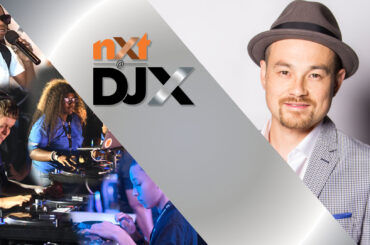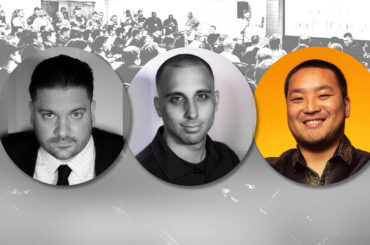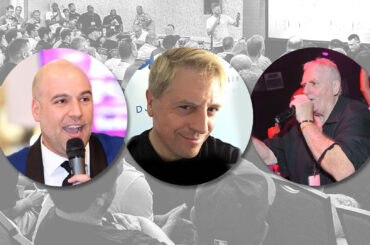Chris Page and Dan Havers of DC Breaks operate on a solid teamwork template.
The U.K. drum-n-bass duo saw the release of its first artist album, Different Breed, this past April on the genre’s leading label, Ram Records. The recording process took a few years, during which more than two albums’ worth of other DC Breaks material was released, but Havers and Page stuck with it – and the resulting full-length showcases the balance between their distinct talents.
Page is the production-leaning member, while Havers handles the songwriting side. Different Breed reflects both these angles with bangers such as the immaculate “Organism” and funky tear-out “Underground,” as well as radio-ready songs such as the super-sticky “No One Like You” and the gentle “Time to Kill.” The flow on Different Breed doesn’t seem like it would work, but it does, extremely well.
“I’m the type of person that always starts stuff and never finishes it,” says Page. “I spend ages writing 16 loops and riffs, coming up with loads of ideas. I’ll send [Havers] 30-second chunks and he’ll pick which ones we finish. He had a publishing deal, so he has a lot of singer/songwriter contacts that he likes to work with. He’ll get them in the studio, write piano, chords, a vocal in a day, send me that and I’ll put the beats and bassline to it. I start the bangers and he starts the songs.”
Both fellows operate Logic on Macs and maintain the same plug-in set-up to keep the swapping of files simple – Page maintains his studio in Bristol, while Havers does so in London. The tendency for DC Breaks is to make all its sounds from scratch and, as a result, create more unique ones over which they have more control—something they both feel is required in drum-n-bass and its famously difficult production. Havers has more outboard gear and traditional instruments like piano and guitars, as well as tube EQs and a tube compressor, which he uses mainly for vocals and synths. Page keeps his studio in the box.
“I use FabFilter for every channel—the EQ is really good,” says Page. “Trackspacer from Wavesfactory is really good as a sidechain compressor. You can specify the frequency range. It’s really useful for ducking frequencies out of vocals with snare drums. Or if you need a bassline to kick, get it to subkick a kickdrum out whenever the kick drum is hitting. It’s a good way of cramming more stuff into your tunes, which we always like to do.
“There’s a really good plug-in by Waves called Element,” he continues. “They’re not known for their synths, but it’s basic synthesis which makes deep effect-y type sounds that are really raw and grounded and super-easy to use, quick to get a good result. The thing I’ve been using the most for making the bangers is Serum because the bass design is just really, really good.”
Even with all his expertise in Serum, Page, on occasion, comes across challenges, such as on the aforementioned “Organism,” where it took a lot to get the bass sound correct.
“The crux of that sound is using a partially mixed in bandpass filter quite resonant and then using the envelopes to oscillate how much of the growl part of the sound is coming through,” he explains. “The envelopes and the oscillators in Serum are super-flexible, so you can draw ridiculously complicated envelopes and in a later edition keep adding and adding and assign different parameters. Then for each oscillator you’ve got a huge amount of control over the unison settings which in Serum make it sound phat and wide if you want to add that in there. The distortion section in it is really good as well, so if you want to bring out that grid, you can do that with an oscillator so it starts off a bit rounder than sunny and warm, but then get the classic growl, which is the core of that bassline.”
Havers has his own challenges in the vocal department. For fast tunes, his vocal chain, which changes all the time, is a hard compressor and EQ cuts. For slow tracks, it is warm compressor with EQ boosts and de-esser, then adding tons of effects: reverb in the verse, delay in the chorus, and stereo like doubling and pitch shifting.
“I hate recording vocals,” he says frankly. “So many singers can’t hit the notes and have funny quirks, like noise coming through their nose, which picks up on the microphone and takes ages to edit out and tune with too many takes to go through.”
Explaining the process for the surefire hit-to-be “No One Like You,” Havers says, “Niara Scarlett, whom I work with all the time, came around. We began playing chords on the piano, recording them once we were happy with them and she began to create melodies. Every now and then, we would record some on top of the piano over and over until we were happy with the melody. We then began writing lyrics in the same type of process. When she left I ditched the piano chords and turn to pads, strings, and ARPs to make more synthetic drum-n-bass sound. [Page] added the big brass chords, which we later re-recorded with a five-piece brass section, who kept adding their own big-band-style riffs, which I had to repeatedly take out and make them play just the boring chords.”
Due to Different Breed’s long gestation process, many of its tracks are familiar to drum-n-bass crowds in virtual dubplate form. In many cases, the tune is known, but the artist isn’t. Now that the guys from DC Breaks can reveal themselves as the artist, there is even more hype about their sets.
“When I first got into DJing, it wasn’t even the tunes you played, it was how you mixed them,” says Page. “Now when I play a record, it’s almost entirely because it’s going to be something really cool when I mix it with something else. I have my USB organized by sections where I know what the mixes are, how they work, and how the tunes interact. I think of a set not as, ‘I need to play this type of music,’ it’s more, ‘I need to do this mix.’ The mixes themselves are more exciting than individual tunes.”







